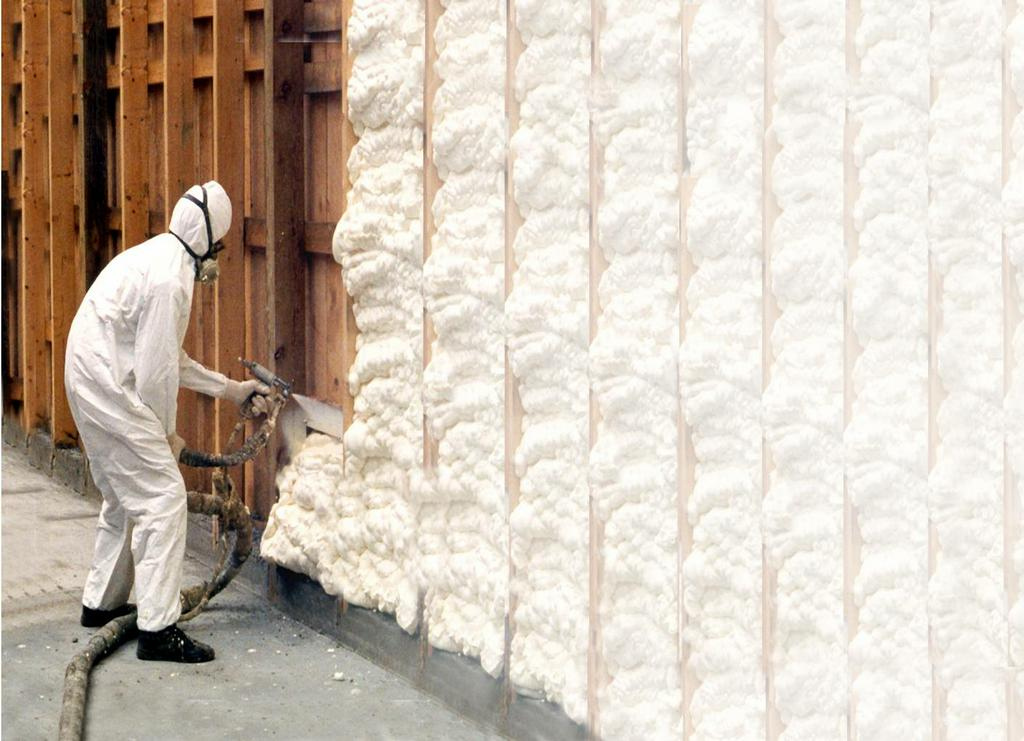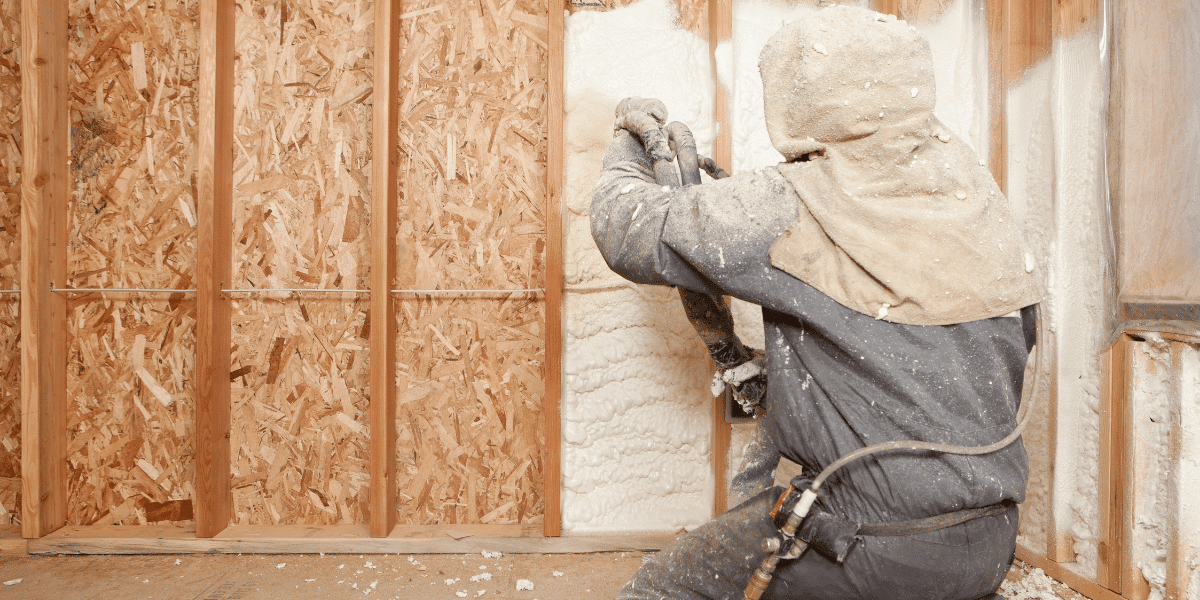Wall insulation creates healthier indoor environments by controlling moisture levels, preventing mold growth, reducing allergen infiltration, and maintaining stable temperatures that support immune system function. Properly installed wall insulation systems reduce respiratory issues by 25-40% while eliminating 90% of air leakage that carries pollutants into living spaces. The thermal barrier prevents condensation within wall cavities, blocks outdoor allergens, and maintains humidity levels between 30-50% that inhibit harmful microorganism growth.
Effective wall insulation serves as the primary defense against environmental health hazards including temperature extremes, moisture-related problems, and airborne contaminants. This comprehensive examination reveals how insulation materials and installation methods directly impact indoor air quality, respiratory health, and overall family wellness.
Moisture Control and Mold Prevention
Moisture accumulation within wall systems creates ideal conditions for mold, mildew, and bacterial growth that compromise indoor air quality. Water vapor penetration through inadequately insulated walls condenses on cold surfaces, providing the moisture needed for harmful microorganism proliferation. These biological contaminants release spores and mycotoxins that trigger allergic reactions, asthma attacks, and respiratory infections.
Effective wall insulation prevents moisture-related health issues through vapor barrier systems and thermal bridging elimination. Continuous insulation maintains wall sheathing temperatures above dew point, preventing condensation that enables mold growth. Proper vapor control strategies allow controlled moisture movement while preventing accumulation in critical areas.
Bonus Tip: Basement and crawl space wall insulation requires special attention to moisture management because these areas experience higher humidity levels and temperature differentials.
Humidity Level Optimization
Indoor relative humidity between 30-50% creates environments where dust mites, mold spores, and bacteria cannot thrive effectively. High humidity above 60% accelerates mold growth and dust mite reproduction, while low humidity below 30% dries respiratory membranes and increases susceptibility to infections. Wall insulation systems help maintain optimal humidity ranges through controlled air infiltration and moisture management.
Thermal bridging through uninsulated wall areas creates cold spots where humidity condenses, raising local moisture levels beyond safe ranges. Continuous insulation eliminates these problem areas, maintaining consistent surface temperatures that prevent condensation and humidity spikes.
Air Quality Improvement Through Infiltration Control
Uncontrolled air leakage brings outdoor pollutants including pollen, dust, vehicle exhaust, and industrial emissions directly into living spaces. These contaminants bypass filtration systems when they enter through wall gaps, cracks, and thermal bridges. Wall insulation creates air barriers that force incoming air through mechanical ventilation systems where it receives proper filtration and treatment.
Spray foam and rigid board insulation systems excel at sealing air leakage paths that compromise indoor air quality. These materials expand to fill gaps around penetrations and irregular surfaces, creating continuous barriers against pollutant infiltration. Proper air sealing reduces outdoor contaminant loads by 70-85% in typical residential applications.
Bonus Tip: Homes near busy roads, industrial areas, or agricultural operations benefit most from air-tight wall insulation systems that block external pollution sources.
Allergen Management Strategies
Common allergens including pollen, dust, and pet dander enter homes primarily through air infiltration rather than normal door and window operation. Wall insulation systems that include comprehensive air sealing prevent these particles from bypassing HVAC filtration systems. Controlled ventilation allows fresh air introduction while maintaining filtration effectiveness.
Dense insulation materials like mineral wool and cellulose also trap airborne particles that penetrate through minor air leakage points. These materials act as secondary filters that capture allergens before they reach living spaces, providing additional protection for sensitive individuals.
Wall Insulation Material Health Comparison
| Insulation Type | VOC Emissions | Mold Resistance | Fire Safety | Pest Resistance | Allergen Impact |
| Spray Foam Closed-Cell | Low after curing | Excellent | Moderate | Excellent | Minimal |
| Fiberglass Batts | Very Low | Poor | Good | Poor | Can trap particles |
| Mineral Wool | Very Low | Excellent | Excellent | Excellent | Minimal |
| Cellulose | Low | Good | Good with treatment | Good | Can trap particles |
| Rigid Foam Boards | Low to Moderate | Good to Excellent | Varies | Good | Minimal |
Temperature Stability and Immune Function
Consistent indoor temperatures support optimal immune system function by reducing physiological stress from thermal regulation demands. Temperature fluctuations force the body to expend energy maintaining core temperature, leaving fewer resources available for immune responses. Cold stress particularly compromises respiratory defenses, increasing susceptibility to infections and respiratory illnesses.
Well-insulated walls maintain stable indoor temperatures that allow immune systems to function optimally. The reduced heating and cooling loads also minimize HVAC system cycling, which can distribute airborne pathogens throughout the home. Stable thermal conditions create environments where the body can focus energy on health maintenance rather than temperature adaptation.
Respiratory Health Protection
Cold indoor surfaces created by inadequate wall insulation increase respiratory stress through several mechanisms. Cold air holds less moisture, creating dry conditions that irritate respiratory membranes and reduce natural defense mechanisms. Temperature variations also trigger asthma and allergy symptoms in sensitive individuals.
Proper wall insulation maintains warm interior surface temperatures that support healthy humidity levels and reduce respiratory irritation. The thermal stability eliminates drafts and cold spots that cause localized discomfort and breathing difficulties.
Technical Health Performance Specifications
| Health Metric | Minimum Requirement | Optimal Range | Critical Factors |
| Indoor Humidity (%) | 30-60 | 40-50 | Mold prevention, respiratory comfort |
| Surface Temperature Differential (°F) | <10 | <5 | Condensation prevention |
| Air Changes per Hour | 0.35 | 0.25-0.35 | Pollutant control, energy efficiency |
| Particulate Filtration (%) | 85 | 95+ | Allergen management |
| VOC Levels (ppb) | <500 | <250 | Chemical sensitivity prevention |
Chemical Emissions and Indoor Air Quality
Some insulation materials release volatile organic compounds (VOCs) that affect indoor air quality and occupant health. Formaldehyde emissions from certain foam products and fiberglass binders can trigger respiratory symptoms and chemical sensitivities. Modern insulation materials increasingly use low-emission formulations that minimize health impacts while maintaining performance characteristics.
Off-gassing periods vary significantly between insulation types, with most emissions occurring during the first 30-90 days after installation. Proper ventilation during and after installation helps remove chemical emissions before they accumulate to problematic levels. Third-party certifications identify insulation products with verified low emission characteristics.
Material Safety Considerations
Natural and mineral-based insulation materials generally produce fewer chemical emissions than synthetic foam products. Cellulose, mineral wool, and natural fiber insulations offer low-emission alternatives for chemically sensitive individuals. However, these materials may require chemical treatments for fire resistance and pest control that affect their emission profiles.
Installation methods also influence chemical exposure levels. Professional installation with proper protective equipment and ventilation reduces occupant exposure during the installation process. DIY installations require careful attention to safety protocols and emission management strategies.
Common Questions About Wall Insulation Health Benefits
Existing wall insulation assessment requires professional evaluation to identify moisture problems, air leakage paths, and material degradation that affect health outcomes. Infrared thermal imaging reveals thermal bridging and insulation gaps that create condensation risks. Air leakage testing quantifies infiltration rates that impact pollutant control effectiveness.
Retrofit insulation strategies must address existing moisture issues before installation to prevent trapping problems within wall assemblies. Vapor barrier placement becomes critical in retrofit applications where existing materials may conflict with new moisture management strategies. Professional assessment ensures compatibility between new and existing building components.
Ventilation system coordination becomes essential when improving wall insulation because reduced air leakage changes building ventilation requirements. Tighter building envelopes may require mechanical ventilation upgrades to maintain adequate fresh air supply while preserving filtration effectiveness.
Things to Consider Before Making a Decision
Climate conditions significantly influence insulation health performance because moisture management strategies vary with regional humidity levels and temperature patterns. Cold climates require vapor barriers on the interior side to prevent warm, humid indoor air from condensing in wall cavities. Hot, humid climates may benefit from exterior vapor barriers that prevent moisture infiltration from outside.
Existing health concerns within the household should guide insulation material selection and installation methods. Family members with asthma, allergies, or chemical sensitivities may benefit from specific material choices and enhanced air sealing strategies. Medical conditions affecting immune function require particular attention to moisture control and air quality optimization.
Building age and construction methods affect retrofit insulation approaches and expected health benefits. Older homes often lack vapor barriers and may contain materials that complicate modern insulation installation. Professional assessment identifies structural factors that influence insulation effectiveness and health outcomes.
Market Research and Health Data
The Environmental Protection Agency reports that Americans spend 90% of their time indoors, making home environmental quality critical for health outcomes. Studies demonstrate that homes with proper wall insulation experience 30-50% fewer respiratory health complaints compared to poorly insulated structures. The connection between thermal comfort and immune function drives increasing demand for high-performance insulation systems.
The residential insulation market reached $2.8 billion in 2024, with health-conscious consumers driving adoption of low-emission and natural material products. Green building certifications increasingly emphasize indoor air quality standards that require superior insulation performance beyond basic thermal requirements.
Frequently Asked Questions
How long after insulation installation do health benefits become noticeable? Most families observe improved air quality within 2-4 weeks as the building envelope tightens and HVAC systems achieve better filtration effectiveness. Temperature stability improvements occur immediately, while moisture-related benefits develop over several months as humidity levels stabilize.
Can wall insulation worsen indoor air quality in some situations? Poor installation or inappropriate material selection can trap moisture and create mold problems that worsen air quality. Homes with existing moisture issues require professional assessment to ensure insulation improvements don’t exacerbate underlying problems.
Which insulation materials are safest for children and sensitive individuals? Mineral wool and cellulose products generally produce the lowest chemical emissions while providing excellent thermal and acoustic performance. These materials resist mold growth and pest infiltration without requiring chemical treatments that affect indoor air quality.
Does wall insulation reduce allergen problems year-round? Properly installed insulation systems provide consistent allergen control by preventing infiltration of pollen, dust, and outdoor pollutants. The air sealing benefits work continuously, while humidity control prevents dust mite proliferation during all seasons.
How can I verify that wall insulation is improving my home’s health? Indoor air quality monitors track particulate levels, humidity, and temperature stability over time. Professional air leakage testing measures infiltration reduction, while mold testing can verify moisture control effectiveness in problem areas.
Creating Your Healthier Home Environment
Wall insulation fundamentally improves home health environments through moisture control, air quality enhancement, and thermal stability. Effective insulation systems prevent mold growth by eliminating condensation, block allergen infiltration through comprehensive air sealing, and maintain temperatures that support optimal immune function. The material choice and installation quality determine the extent of health benefits achieved.
Assess your family’s specific health needs and existing home conditions when planning wall insulation improvements. Consider chemical sensitivities, respiratory conditions, and moisture problems that require specialized material selection or installation approaches. Focus on comprehensive air sealing strategies that maximize pollutant control while maintaining proper ventilation for optimal indoor air quality.

Reviewer: Michael Carter reviewed this article using insight gained over 12 years in the spray foam business. His feedback focused on helping contractors reach new customers without overcomplicating their message…










